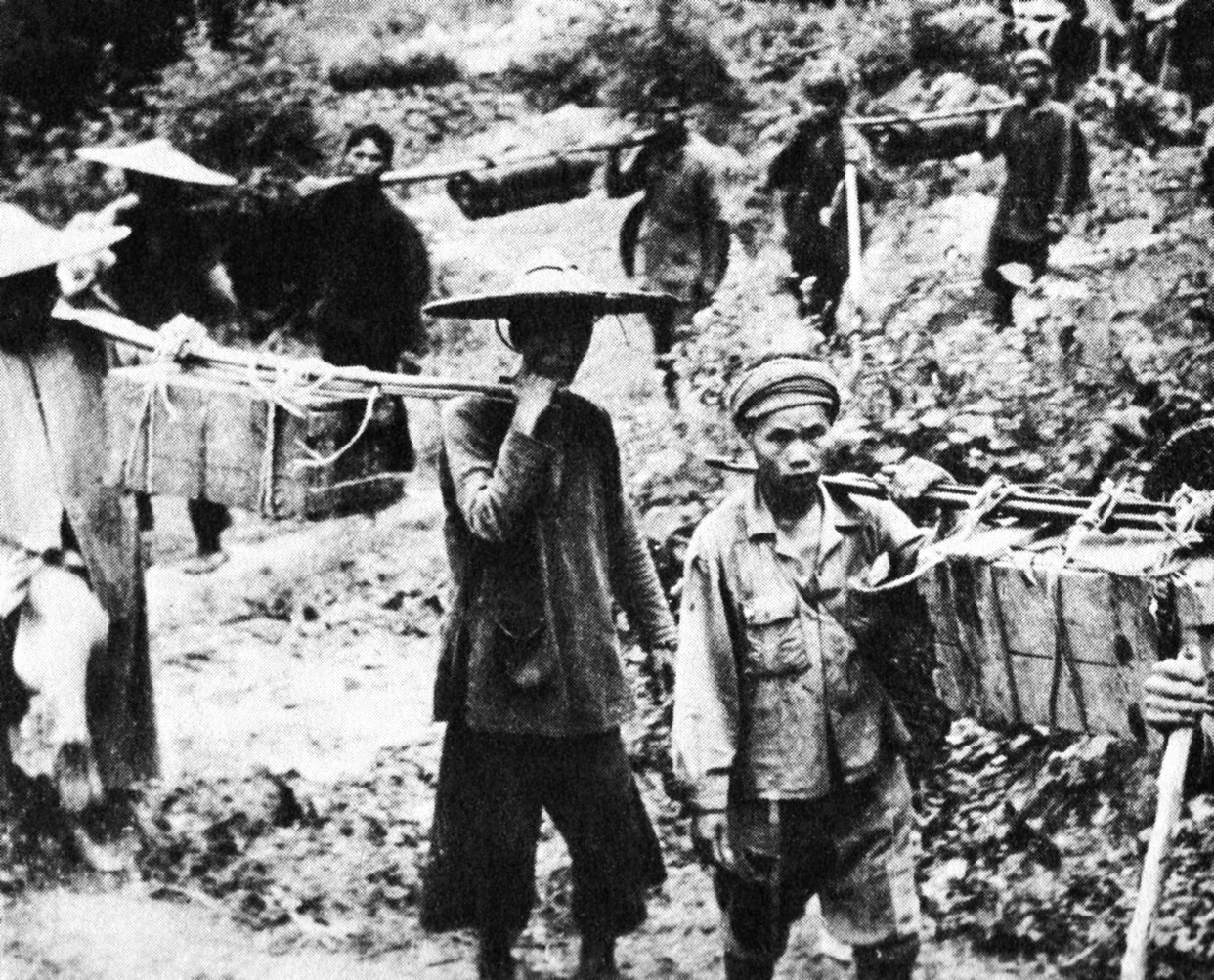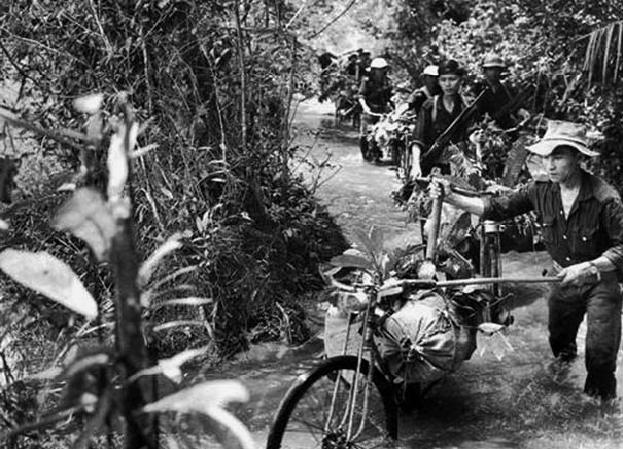|
Tân Ấp Station
Tân Ấp station is a railway station on the North–South railway (Reunification Express) line in Vietnam. It serves the town of Tân Ấp in Quảng Bình Province. From 1933, the station also served as a terminus of the Tân Ấp–Xóm Cục railway, the only stretch of railway opened as part of the aborted Thakhek–Tân Ấp railway. It is uncertain when this stretch of railway was closed, but part, if not all of the railway was reopened by in the 1960s as part of their efforts to aid guerill ... [...More Info...] [...Related Items...] OR: [Wikipedia] [Google] [Baidu] |
Quảng Bình Province
Quảng Bình was formerly a southern coastal Provinces of Vietnam, province in the North Central Coast region, the Central Vietnam, Central of Việt Nam, Vietnam. It borders Hà Tĩnh province, Hà Tĩnh to the north, Quảng Trị province, Quảng Trị to the south, Khammouane province, Khammouane of Laos to the west and the Gulf of Tonkin (South China Sea) to the east. On June 12th, 2025, Quảng Bình was merged into Quảng Trị province, Quảng Trị. History Quảng Bình was formerly Tiên Bình prefecture under the reign of Lê Trung Hưng of the Lê dynasty (this province was renamed Quảng Bình in 1604). The province has an area of and population of 913,860 inhabitants (as of 2022). Historically, this region belonged to kingdom of Champa. Later it was claimed by both the An Nam and Champa and officially annexed into An Nam by Lý Thường Kiệt, a Lý dynasty general (under the reign of Lý Thánh Tông) in 1069. The site of present-day Quảng Bình ... [...More Info...] [...Related Items...] OR: [Wikipedia] [Google] [Baidu] |
Vietnam
Vietnam, officially the Socialist Republic of Vietnam (SRV), is a country at the eastern edge of mainland Southeast Asia, with an area of about and a population of over 100 million, making it the world's List of countries and dependencies by population, fifteenth-most populous country. One of two communist states in Southeast Asia, Vietnam shares land borders with China to the north, and Laos and Cambodia to the west. It shares Maritime boundary, maritime borders with Thailand through the Gulf of Thailand, and the Philippines, Indonesia, and Malaysia through the South China Sea. Its capital is Hanoi and its largest city is Ho Chi Minh City. Vietnam was inhabited by the Paleolithic age, with states established in the first millennium BC on the Red River Delta in modern-day northern Vietnam. Before the Han dynasty's invasion, Vietnam was marked by a vibrant mix of religion, culture, and social norms. The Han dynasty annexed Northern and Central Vietnam, which were subs ... [...More Info...] [...Related Items...] OR: [Wikipedia] [Google] [Baidu] |
Vietnam Railways
Vietnam Railways (VNR, ) is the state-owned operator of the railway system in Vietnam. The principal route is the single-track North–South Railway line, running between Hanoi and Ho Chi Minh City. This was built at the metre gauge in the 1880s during the French colonial rule. There are also standard gauge lines running from Hanoi to the People’s Republic of China, eventually leading to Beijing, and some mixed gauge in and around Hanoi. Problems While the state of the country’s road network is consistently improving, the railway system makes a significant contribution to the national transport infrastructure, with multiple daily freight trains, many being movement of containers. The 29-34-hour passenger trip between Hanoi and Ho Chi Minh City is very popular both with locals and foreign visitors. Accommodations are: hard seat, soft seat, 4 berth sleeper, and 6 berth sleeper. Coastal resorts such as Huế, Hội An, and Nha Trang lie along the route and gen ... [...More Info...] [...Related Items...] OR: [Wikipedia] [Google] [Baidu] |
Railway Station
Rail transport (also known as train transport) is a means of transport using wheeled vehicles running in railway track, tracks, which usually consist of two parallel steel railway track, rails. Rail transport is one of the two primary means of land transport, next to road transport. It is used for about 8% of passenger and rail freight transport, freight transport globally, thanks to its Energy efficiency in transport, energy efficiency and potentially high-speed rail, high speed.Rolling stock on rails generally encounters lower friction, frictional resistance than rubber-tyred road vehicles, allowing rail cars to be coupled into longer trains. Power is usually provided by Diesel locomotive, diesel or Electric locomotive, electric locomotives. While railway transport is capital intensity, capital-intensive and less flexible than road transport, it can carry heavy loads of passengers and cargo with greater energy efficiency and safety. Precursors of railways driven by human or an ... [...More Info...] [...Related Items...] OR: [Wikipedia] [Google] [Baidu] |
Tân Ấp
Tan or TAN may refer to: Arts and entertainment * ''Tan'', an album by the Polish rock band Kult * TAN (group), South Korean boy band * ''Tan'' (newspaper), a newspaper in Turkey * ''Tan'' (weekly newspaper), a newspaper in Kosovo Businesses and organisations * TAN Books, a Catholic publishing company * FC Rubin-TAN Kazan, a Russian professional ice hockey club in Kazan in 1991-94 * Transportes Aéreos Nacionales or TAN Airlines, an airline based in Honduras * Semitan or TAN, operates public transport in Nantes, France People * Tan (surname) (譚), a Chinese surname * Chen (surname) (陳), a Chinese surname, pronounced "Tan" in Min Nan languages * Laozi, posthumous name "Tan" or "Dān" (聃), philosopher of ancient China * Leborgne, nicknamed Tan, a patient of Paul Broca's, on whose autopsy he identified Broca's area * TAN (musician) (born 1990), Malaysian pop singer * Tan Sağtürk (born 1969), Turkish ballet dancer * Tan France (born 1983), British-American fashion designe ... [...More Info...] [...Related Items...] OR: [Wikipedia] [Google] [Baidu] |
North Vietnam
North Vietnam, officially the Democratic Republic of Vietnam (DRV; ; VNDCCH), was a country in Southeast Asia from 1945 to 1976, with sovereignty fully recognized in 1954 Geneva Conference, 1954. A member of the communist Eastern Bloc, it opposed the French-supported State of Vietnam and later the Western-allied South Vietnam, Republic of Vietnam (South Vietnam). The DRV Fall of Saigon, invaded Saigon in 1975 and ceased to exist the following year when it Reunification Day, merged with Provisional Revolutionary Government of the Republic of South Vietnam, the south to become the current Vietnam, Socialist Republic of Vietnam. During the August Revolution following French Indochina in World War II, World War II, Vietnamese communist revolutionary Ho Chi Minh, Hồ Chí Minh, leader of the Viet Minh, Việt Minh Front, Proclamation of Independence of the Democratic Republic of Vietnam, declared independence on 2 September 1945 and proclaimed the creation of the Democratic Repu ... [...More Info...] [...Related Items...] OR: [Wikipedia] [Google] [Baidu] |
Vietcong
The Viet Cong (VC) was an epithet and umbrella term to refer to the Communism, communist-driven armed movement and united front organization in South Vietnam. It was formally organized as and led by the National Liberation Front of South Vietnam, and conducted military operations under the name of the Liberation Army of South Vietnam (LASV). The movement fought under the direction of North Vietnam against the South Vietnamese and United States governments during the Vietnam War. The organization had both guerrilla warfare, guerrilla and regular army units, as well as a network of Professional revolutionaries, cadres who organized and mobilized peasants in the territory the VC controlled. During the war, communist fighters and some Anti-war movement, anti-war activists claimed that the VC was an insurgency indigenous to the South that represented the legitimate rights of people in South Vietnam, while the U.S. and South Vietnamese governments portrayed the group as a tool of N ... [...More Info...] [...Related Items...] OR: [Wikipedia] [Google] [Baidu] |
Ho Chi Minh Trail
The Ho Chi Minh Trail (), also called Annamite Range Trail () was a Military logistics, logistical network of roads and trails that ran from North Vietnam to South Vietnam through the kingdoms of Kingdom of Laos, Laos and Cambodia (1953–1970), Cambodia. The system provided support, in the form of manpower and materiel, to the Viet Cong (or "VC") and the People's Army of Vietnam (PAVN), during the Vietnam War. Construction for the network began following the North Vietnamese invasion of Laos in July 1959. At the time it was believed to be the main supply route, however it later transpired that the Sihanouk Trail which ran through Cambodia was handling significantly more material. It was named by the U.S. after the North Vietnamese leader Ho Chi Minh, Hồ Chí Minh. The origin of the name is presumed to have come from the First Indochina War, when there was a Viet Minh maritime logistics line called the "Route of Ho Chi Minh", and shortly after late 1960, as the present trail d ... [...More Info...] [...Related Items...] OR: [Wikipedia] [Google] [Baidu] |
Mụ Giạ Pass
The Mụ Giạ Pass (Đèo Mụ Giạ, Quảng Bình) is a mountain pass in the Annamite Range between northern Vietnam and Laos, located 90 km northwest of Đồng Hới, Vietnam. The pass is 418 m above sea level and connects National Road 15 from Tân Ấp in Vietnam to Route 12 in Khammouane Province in Laos. Importance during Vietnam War During the Vietnam War the pass was the principal point of entry into the Ho Chi Minh Trail through Laos. A CIA landscape analysis prepared in February 1966 described Route 15 as threading "its way upstream along a narrow, steep-sided valley. To the left rise dog-toothed limestone peaks, to the right is a flat-topped plateau. Dense tropical rain forest covers the entire area, almost frustrating aerial observation. The road is carved out of the steep hillside, for in most places there is not enough room for both road and stream in the constricted bottom of the ravine". Due to its difficult geography, the pass was identified as a chok ... [...More Info...] [...Related Items...] OR: [Wikipedia] [Google] [Baidu] |
Buildings And Structures In Quảng Bình Province
A building or edifice is an enclosed structure with a roof, walls and windows, usually standing permanently in one place, such as a house or factory. Buildings come in a variety of sizes, shapes, and functions, and have been adapted throughout history for numerous factors, from building materials available, to weather conditions, land prices, ground conditions, specific uses, prestige, and aesthetic reasons. To better understand the concept, see ''Nonbuilding structure'' for contrast. Buildings serve several societal needs – occupancy, primarily as shelter from weather, security, living space, privacy, to store belongings, and to comfortably live and work. A building as a shelter represents a physical separation of the human habitat (a place of comfort and safety) from the ''outside'' (a place that may be harsh and harmful at times). buildings have been objects or canvasses of much artistic expression. In recent years, interest in sustainable planning and building practi ... [...More Info...] [...Related Items...] OR: [Wikipedia] [Google] [Baidu] |





